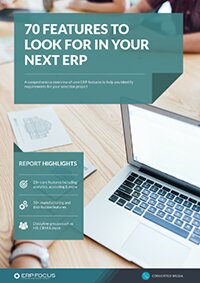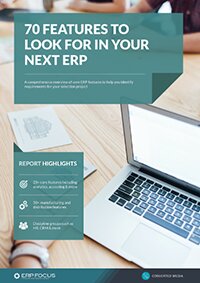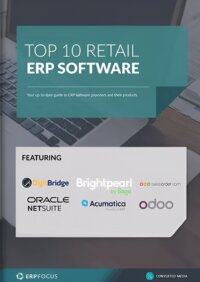Five pricing and cost processes your retail ERP should support
Retail is about selling things for more than they cost and earning a profit, but like any good rule, there can be exceptions. Retail ERP provides tools that help a business earn that profit across one product or across their entire stock.
The price for any item might be defined by a manufacturer’s suggested retail price (MSRP). We see this in the automobile business. Price might also be set by a cost plus markup percentage ration. Most prices ultimately are set by the market – what a customer is willing to pay for that item and when he wants to buy it.
1. Adjusted pricing
Retailers often set a “standard” price in their ERP for an item they sell. Then they proceed to adjust that price for many reasons. The item might go on sale at a temporarily reduced price. That adjusted price is within the ERP and has a start and end date. It could be a percentage adjustment from standard price or an override amount.
Price is also defined by seasons for many items. A Mother’s Day card might easily sell at $4.95 during the first week of May and cannot be given away by the end of May. Seasonal prices can be set in ERP for all affected items.
2. Location-based pricing
Price for any item can vary from store to store in the same “bricks and mortar” retail business. They might set a higher price in the ritzy part of town and a lower price in a store in the working-class part of the same city. ERP will have a setting to adjust prices by store location and one store might be at 110% of standard while another is at 90%. This can be taken one step further by automating location-based pricing using performance metrics from each retail location.
3. Point of sale automation
Retail ERP must have a reliable cost management functionality to be a viable business tool. The amount charged at the point of sale cash register must match any promotion or seasonal price advertised. ERP often will have the ability to print shelf and item price tags that all need to be consistent.
"Retail ERP must have a reliable cost management functionality to be a viable business tool"
The price charged to certain customers might be changed at the point of sale to reflect that customer’s discount. ERP keeps that discount factor as a part of the customer record and automatically discounts sales to that customer. If your retail ERP isn’t up to scratch on this, it might be time for an upgrade.
4. Cost management
Cost is the other half of the profit equation. These days cost is a variable amount. Brand promotions frequently come with a reduced cost for a certain time ahead of the promotion. ERP will track costs at a discount where a PO release during the discount period will be at the reduced cost. Some items can be purchased through different channels that might have different costs and ERP tracks the cost wherever the purchase is made. The actual unit cost charged is only one factor in cost. If one supplier demands immediate payment and another gives payment terms, the supplier who offers terms has the lower cost.
5. Shrinkage & Returns
Shrinkage is an important cost for most retailers. Stock is lost. Was it stolen by someone posing as a customer? Did an employee take it out in their lunch pail? Whatever the reason, 100 were bought and only 95 were ultimately available to sell. But all 100 must be paid for. ERP will have an estimated shrinkage factor for every SKU which will automatically adjust stock on hand periodically.
Customer returns are another important cost factor. If your supplier says “I delivered it, you pay for it.”, your cost is set. If the supplier will take it back, even at a reduced amount, your cost is improved.
Profit is the difference between price and cost. Retail ERP has to make that calculation over changing prices and costs. Whether it is able to identify specifically the price and cost for each item or uses an averaging method, your profit depends on an accurate retail ERP.
Free white paper

70 features to look for in your next ERP
A comprehensive guide to help you identify requirements for your ERP selection

Featured white papers
Related articles
-

Integrating your ERP with POS
How can integrating your ERP with your POS help to streamline your business?
-

CMMC Compliance: What Aerospace and Defense Manufacturers Need to Know
Key insights on CMMC compliance, deadlines, and securing DoD contracts with CMMC 2.0 certificatio...
-

Requirements gathering for retail ERP
What are the most important factors of ERP requirements gathering for retail businesses?


